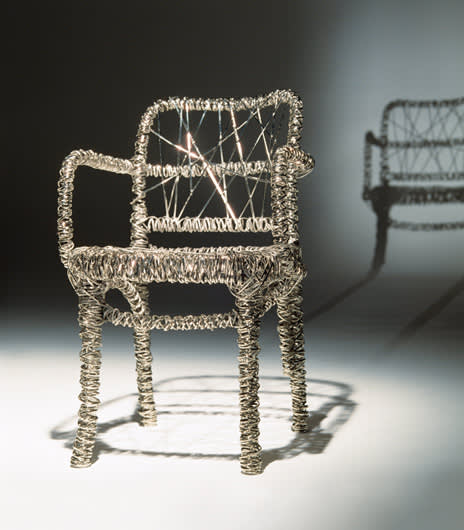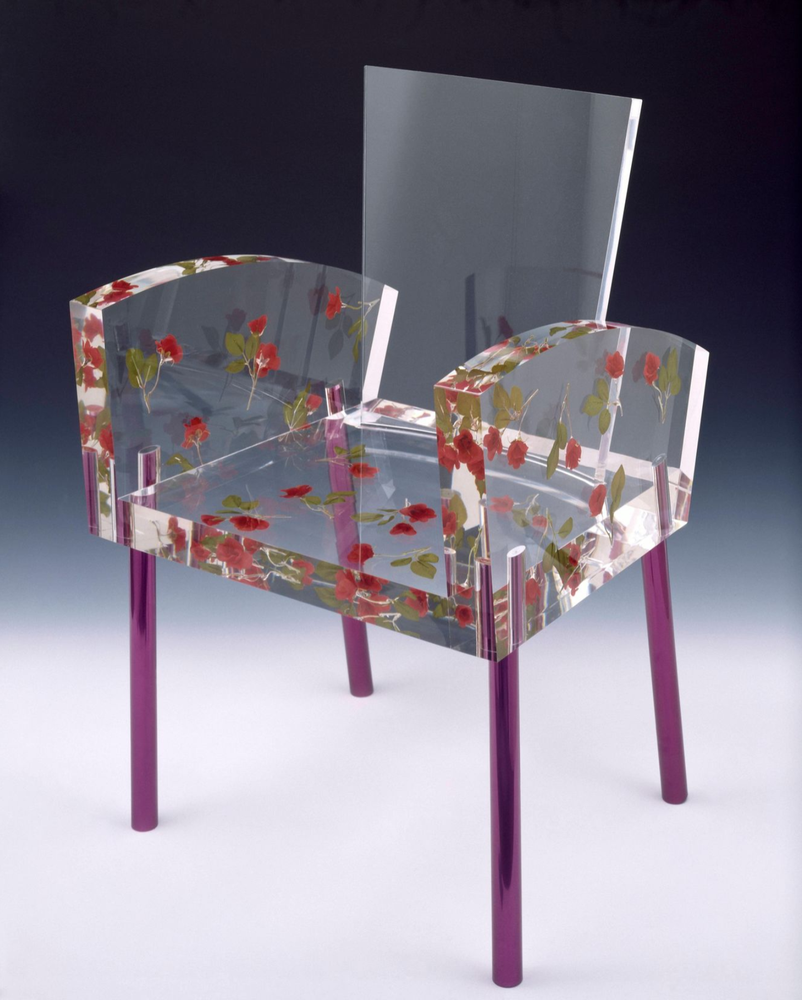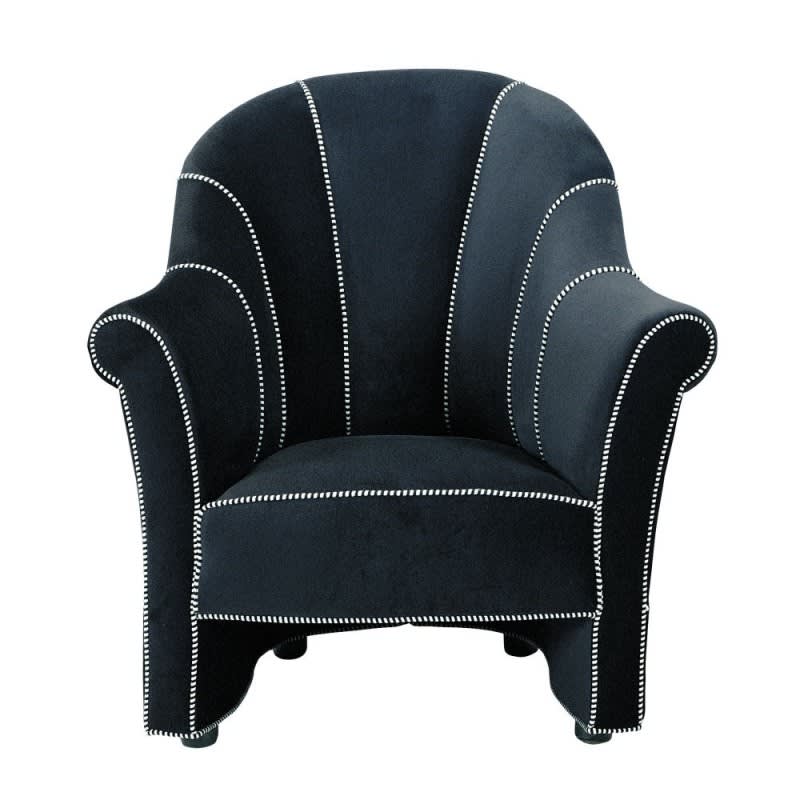
Shiro Kuramata
Homage to Josef Hoffmann, Begin the Beguine, 1985
It's hard to imagine that the sleek, almost machine-age appearance of Shiro Kuramata’s most celebrated designs of the 20th century share a unique kinship with one of the foremost figures of the modernist period, Austrian architect Josef Hoffmann.
Born in Tokyo in 1934, Shiro Kuramata began working for a furniture company as a young man and later enrolled in the prestigious Kuwasawa Design School in the 1950s. While his earliest projects constituted countless bars, restaurants and clothing shops around Tokyo – namely for activewear brand Esprit and Japanese avant garde designer Issey Miyake – Kuramata’s career quickly expanded on an international stage. Widely recognized for his distinctive use of industrial materials and employment of novel construction techniques, Shiro Kuramata went on to become one of Japan’s most important designers of the 20th century.
Shiro Kuramata
Esprit Store, Singapore, 1986
Shiro Kuramata
Issey Miyake Store, Kobe, 1988
Shiro Kuramata
Oblomov bar, Fukuoka, 1989
Shiro Kuramata
Edward's Head Office, 1969
Shiro Kuramata
Supper Club Cazador, Tokyo, 1967
While Kuramata’s trademark style is frequently categorized by its sleek and restrained space age appearance, his pieces were oftentimes realized through processes of meticulous craftsmanship and careful attention to detail rooted in centuries-old Japanese tradition. As his career developed throughout the latter half of the 20th century, Kuramata’s references remained uniquely classical and nostalgic, perhaps most evident in the two designs he created throughout the 1980s in homage to Austrian architect Josef Hoffmann.

Shiro Kuramata
Pictured with Furniture in Irregular Forms, 1970
Nearly a century before Shiro Kuramata emerged as a leading figure of contemporary design throughout the Far East, Josef Hoffmann rose to prominence as a founding member of the Vienna Secession. While their aesthetics differed significantly, Hoffmann’s obsession with quality and high-level craftsmanship beg comparison to the likeminded ideals that Kuramata later championed.

Shiro Kuramata
Miss Blanche Chair, 1988
On New Year’s Day in 1985, Shiro Kuramata created his first homage to Josef Hoffmann, through an object that was both referential and ultramodern. Using a contemporary version of Hoffmann’s Thonet Bentwood Chair as a structural form, the Japanese architect wrapped the original design in steel wire and began dousing the piece in paraffin, a flammable compound. Kuramata set fire to the work and watched the original wooden chair burst into flames and disintegrate, leaving behind nothing but a ghostly silhouette. The completed object, which hardly constituted a piece of furniture being that it was much too fragile to sit on, illustrates three hallmark qualities of Kuramata’s practice, including his likeness to manipulate industrial materials in unfamiliar ways, his avant-garde tendencies, and his taste for Western nostalgia.
Josef Hoffmann
Bentwood Chair, No. 811, 1900s (Reproduction)
Shiro Kuramata
Homage to Josef Hoffmann, Begin the Beguine, 1985
Shiro Kuramata
Homage to Josef Hoffmann, Begin the Beguine, 1985
While Kuramata’s original homage to Josef Hoffmann was as much a work of performance art as it was a forward-thinking design object, in 1986 the Japanese architect took a far more holistic approach towards appropriation. After seeing a black-and-white photograph of a dark velvet chair decorated with shiny brass tacks and contrasting white thread designed by Hoffmann for the house of Dr. Hugo Kroller, Kuramata decided to create his own version.

Josef Hoffmann
Armchair Koller Haus, 1927
In place of the metalwork and thread detailing that follow the scalloped contours of the chair’s original design, Kuramata utilized strings of delicate lights, adding a large electric cable connecting the armchair to a power socket; in effect, transforming the traditional chair into an electric lamp. While nothing appears particularly Japanese about Kuramata’s second homage to Hoffmann, the chair’s design plays with surface, materiality and perception, three hallmark attributes of Kuramata’s highly prolific practice.
What constitutes good design? For some it’s utility, for others it may be materiality. In the case of Shiro Kuramata, good design tells a story, one that is informed by the past to help propel culture and craftsmanship into the future.


